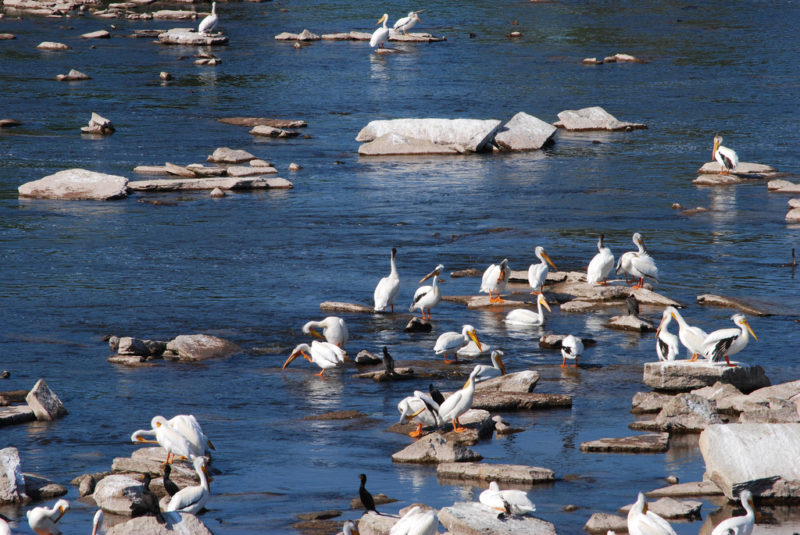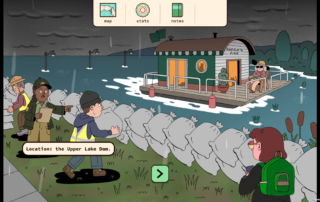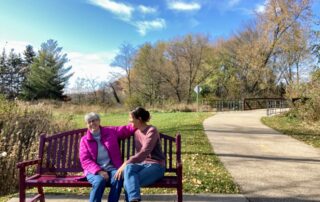As a child, I was taught that a river was the lifeline of an area. It fed its residents, allowed travel and trade, and provided recreation. This was the book learning. But as I grew up, I heard, saw, and felt the stories of a river. The Fox River begins in Columbia County and meanders north to the bay of Green Bay. It has separated towns, creating rivalries—think East and West De Pere, one town, two school districts separated by a current of water. Into its depths my husband’s father would dive for coal, which had rolled from the steep black mountains dumped along the bank edge. The icy waters greeted him, but hands would bring up fists of potential heat, which swimmers were allowed to collect to fire their stoves during the Depression. The Fox has been ridden on, dived into, floated upon, argued over, and dumped into. Still it noisily and majestically sings its song over the De Pere dam.
The river hums stories of change from year to year. From childhood to young adulthood, I saw the seagulls and ducks solidly standing on the rock precipices below the dam. Then in the 1990s, I saw a strange, black bird with an orange throat pouch, and a sleek, long curved neck. It stood as a king’s guard amongst the standard water birds. The cormorants had returned to our area as the river flowed cleaner, the PCB’s dredged from below, the fish multiplying. The birds welcomed me to their story as I drove across the bridge, skimming the water so low, so graceful. Sitting on the dock in Voyageur Park, I’d watch as one would stretch its neck long and slip soundlessly into a deep dive. I’d wait for it to surface bubbling up many yards away, its quarry consumed. Those black birds spoke of cleaner water, of progress from Rachel Carson’s warning in Silent Spring and from the PCBs from paper mills that maimed, killed, and silenced birds and reptiles. The cormorants, hopeful black beauties, spoke the story of a change.
Still, the river, the wandering minstrel, created additional tales. Around 2000, another bird, white with black-tipped wings, a large beak pouch, prehistoric looking, rode the updrafts above the water. On land, these awkward looking birds stood casually on the rocks below the dam. Someone told me they were pelicans. I’d only seen them at the Milwaukee Zoo. With their huge fish-filled scooped bills and large bodies on short legs and webbed feet, they waddled along clumsily on the cement walkways, looking strange and absurd.
But watching the pelicans ascend over the river, I’d stand mesmerized. They flew high overhead in a V formation along the Fox. Sometimes through the summer months, I saw them soar miles inland, not searching for food, but feeling the warm summer wind, riding the currents, wheeling, gliding. I knew they were doing it for the sheer enjoyment, their story of what they could do. I’d pull my car to the roadside, step out amongst the periwinkle chicory to watch them circle, white upon a deep blue, a slow spinning, cirrus-feathered cloud.
Stories of the river course ever changing as the water and as the times themselves. We may learn the facts from a book, but riding along or on a river gives us a chance to see and feel a story that feeds our desire for beauty and awe. It gives us a tale of what was, what is, and what may be possible if we only listen to its words.











